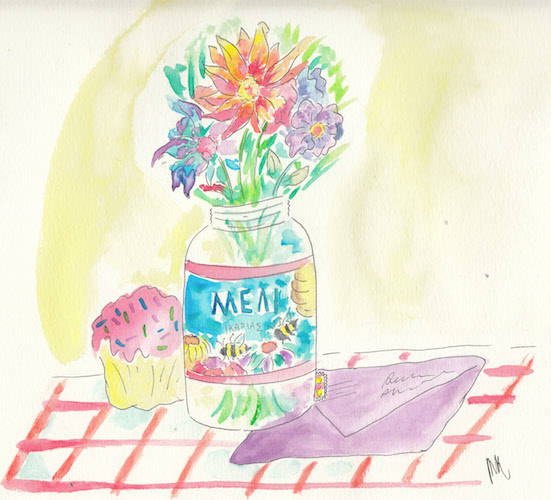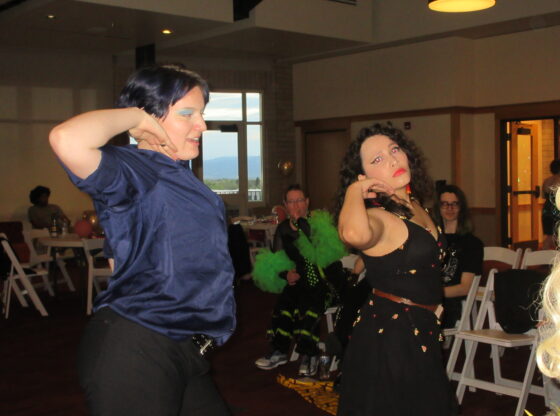Chinatown in New York, San Francisco and Chicago meet its visitors with ornate oriental archways painted red and green and finished with a hint of gold. All that excitement and adventure await in Denver’s Chinatown which is stowed away in the 57-seat Hop Alley restaurant. Standing where thousands of Chinese immigrants called home for many years, Hop Alley was developed by acclaimed restaurant owner and ramen fanatic Uncle Tommy Lee, who has expanded his repertoire.
Now, Lee can showcase Cantonese dim sum and Hunan cooking that has chilis that tickle the back of your throat. The restaurant’s small space is filled with twinkling paper lanterns, a long communal table and even a lazy Susan to truly bring the casual cozy atmosphere to life. Hop Alley not only endorses sharing plates at the table but also the conversation and memories with those that are lucky enough to accompany you.
The short menu may surprise anyone that has a lengthy, tried-and-true Chinese take out menu laying around in their house, ready for emergencies. With only 15-20 menu options at a time, it ensures that dedication and thought were put into each meal that arrives in front of you. Each dish is composed of the specific ingredients used rather than having one vision across multiple proteins and vegetables.
A long-standing item is their soft-shell crab. With this dish, many patrons might think of a spider roll, where pieces of the deep-fried crab are hanging out of the end waiting to say hello. This dish takes aspects of that role and gives it a refreshing outfit change to ease the somewhat heavy role. A quick flash fry allows the sweet crab meat to maintain a soft texture but adds a crispy exterior that is still light enough not to overpower the subtle flavor.
Classic American fried chicken with an Asian twist by adding a hint of spice that still resembles what is found in the South. Since fried food can quickly feel heavy, Lee doesn’t accompany his fry with mac and cheese or potato salad. Instead, he offers lettuce wraps as the ideal utensil and pickled onions for an acidic note and beautiful pink color.
At other restaurants, fish and chips have tartar sauce, Japanese mayo accompanies many rolls, and french fries are now matched with aioli. Therefore, it comes as no surprise that a creamy accompaniment must complement the crunch and spice of the soft shell crab. A lime aioli adds citrus notes to brighten the entire dish which only gets accentuated with the grilled lime laying on the side. With a final touch of wok-fried jalapeños for sweet heat, the dish it off to be devoured.
Another favorite is the Beijing duck roll which looks like an oversized egg roll but offers so much more. The wrap emulates a charred roti which is derived from Malaysian cuisine. It has blistered pockets to add a smokey and flakey texture, but the inside is as buttery as a Parisian croissant. The wrap encloses a pulled duck that stews to the point that the fibers cannot stand together any longer, leading to a succulent, meaty flavor that’s more pronounced than the average poultry. The duck is rich enough that the sweetness gives it the counterbalance it needs, which is why it is often matched with plum or orange sauces. In this dish, hoisin sauce coats the roll with flavors of miso, soy, sesame and rice wine vinegar. The sweet and nutty sauce allows for the duck to shine through even more.
An unexpected dish currently on the menu is their butternut squash dumplings. These little pockets look like clones of the pork and scallion mix that typical Chinese American restaurants provide. Upon reading the menu description, it’s fair to assume that it should have been a pasta dish in a classic French restaurant shaped in little agnolotti pillows dressed in a sage and brown butter sauce. However, the main flavors are sweet, umami and spicy—the backbone of Chinese cooking. Hop Alley took a mundane ingredient and livened it up in a new setting, creating a fresh hybrid dish that was gone within seconds, especially because the side of matchstick taro chips were addictive on their own.
When fried rice is done correctly, it is a humbling side as opposed to the blank canvas of steamed white rice. It can be filled with vegetables—which is commonplace—or with the request of bone marrow to add fattiness and richness that provide a depth of flavor uncharacteristic of its normal preparation. The marrow is the new-school version of putting down a pat of butter; it gives dishes sweet and salty nuttiness. Here, it emulates sesame and soy that are in fried rice as well. Topped with greenery from scallions and finished nicely with that mild onion flavor, this dish is unlike any others.
There’s a lot of pressure in being identified as the next generation of Chinatown in Denver. However, in the hands of Tommy Lee, the future looks bright for the variety of Chinese cuisines he chooses to showcase at Hop Alley.











